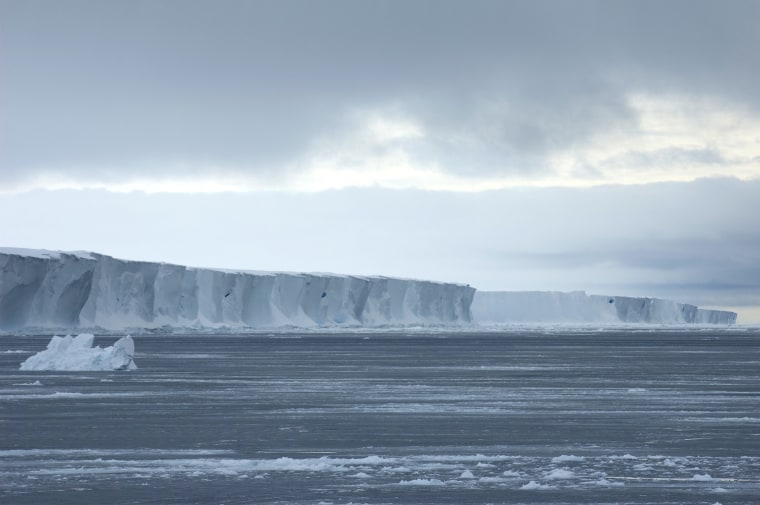Antarctica’s biggest ice shelf may be more vulnerable to climate change than previously thought. A new study of warm seawater seeping into a cavity below the Ross Ice Shelf shows that a key section of the France-size hunk of ice is melting much faster than the rest.
“We’ve identified an especially vulnerable section where the melt rate is 10 times higher than the rest of the ice shelf,” said study co-author Poul Christoffersen, a glaciologist at the University of Cambridge’s Scott Polar Research Institute. The Ross Ice Shelf is considered relatively stable, but Christoffersen said the location of the rapid melting coincided with a “pinning point” — essentially a buttress that holds back flowing ice and lends stability to the entire shelf.
Ice shelves are thick, floating masses of Antarctic ice that form as nearby glaciers flow toward the sea. Previous research showed that warm water from the deep ocean is causing some ice shelves to melt and disintegrate. As that happens, the flow of glaciers into the ocean accelerates, contributing to a gradual rise of sea levels around the world.
A 2017 study by researchers at Cornell University estimated that by the year 2100, 2 billion people across the globe could be displaced by rising seas, which threaten to inundate coastal communities and other low-lying regions. Scientists estimate that seas are currently rising at a rate of roughly 3 millimeters per year, or more than a tenth of an inch.
The new research, which was published online April 29 in the journal Nature Geoscience, shows that a another type of melting — at the water’s surface rather than deep in the ocean — can also affect the stability of ice shelves.
“It’s a new, additional heat source that we point to as being important, certainly with respect to the Ross Ice Shelf which, due to its large size, is of particular concern,” Christoffersen said.
Christoffersen and his colleagues spent four years studying the Ross Ice Shelf and the ocean water underneath it. The scientists drilled an 850-foot-deep hole into the shelf and dropped instruments inside to measure temperature, melting rates and ocean currents within the cavity.
The researchers found that strong offshore winds are blowing sea ice away from the leading edge of the ice shelf, exposing regions of the ocean to the sun’s warmth that previously had been covered by ice. The water’s warmth hastens the melting of the ice.
Laurie Padman, a senior scientist at the Seattle-based Earth & Space Research institute, said the new study provided precise measurements for a phenomenon that has been observed at other ice shelves but which was poorly understood. “For the Ross Ice Shelf, it matters because this melting is occurring in a place where it could change the ability of the ice shelf to buttress the surrounding ice,” he said.
The study doesn’t link the observed melting directly to climate change, but Christoffersen said climate change likely is playing a role. For instance, warmer temperatures could cause the sea ice around ice shelves to thin, making it easier for wind to blow patches away and expose ocean water to sunlight. “We do think melting could become higher due to climate change,” he said.
Want more stories about the environment?
- High tides and sea rise make floods a part of life on the East Coast
- Strong winds are supersizing the ocean's biggest waves
- Climate change may be dissolving the ocean floor. Here's why we should be worried.
SIGN UP FOR THE MACH NEWSLETTER AND FOLLOW NBC NEWS MACH ON TWITTER, FACEBOOK, AND INSTAGRAM.


